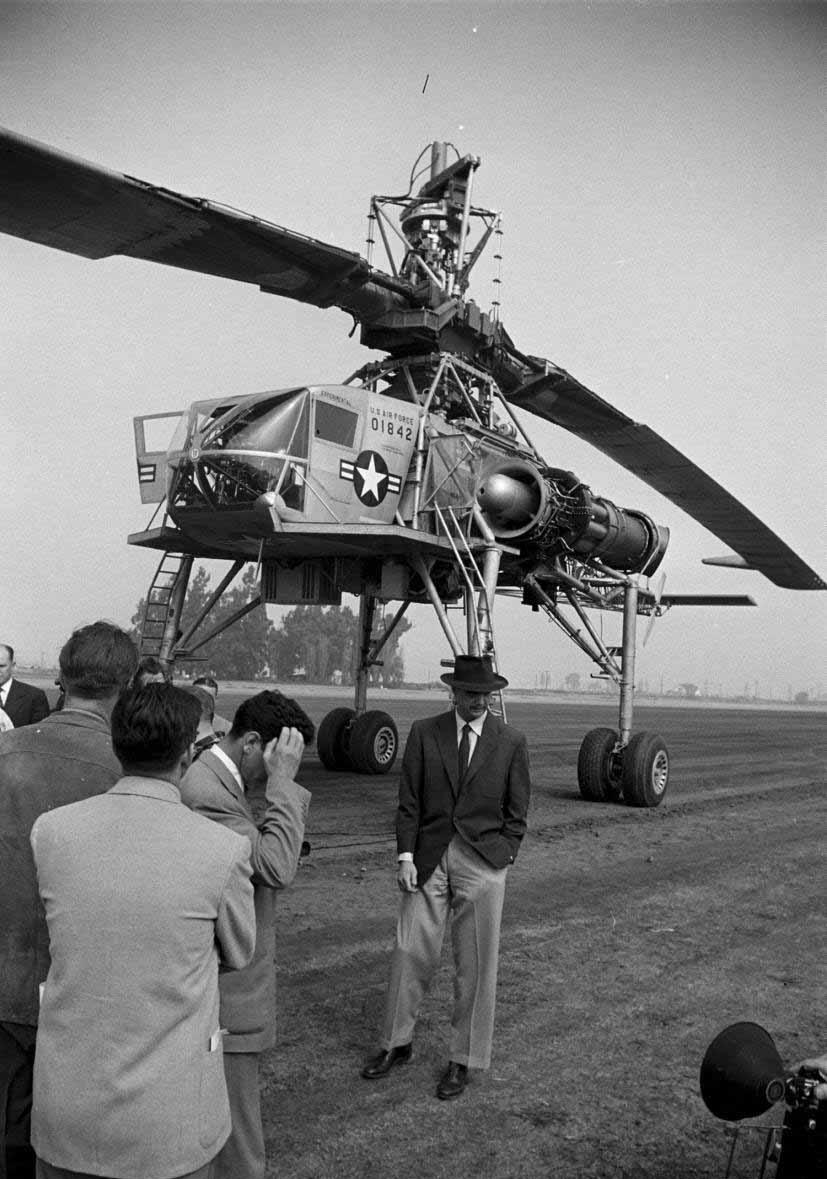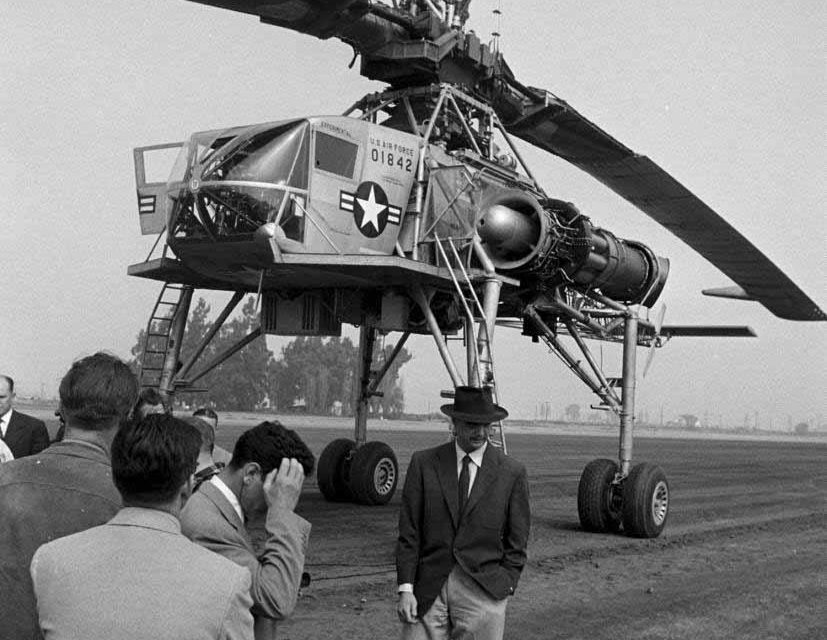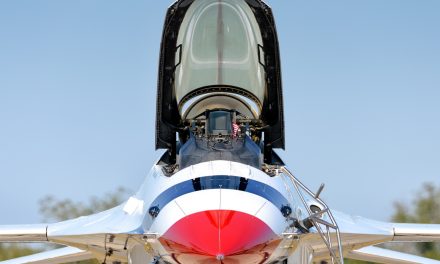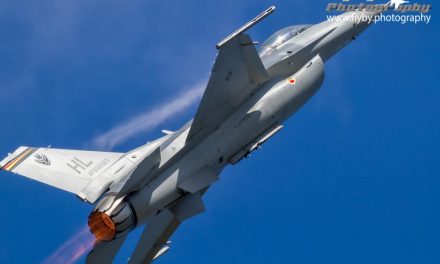
This Day in Aviation History
October 23rd, 1952
First flight of the Hughes XH-17.
The Hughes XH-17 “Flying Crane” was the first helicopter project for the helicopter division of Hughes Aircraft. The XH-17, which had a two-bladed main rotor system with a diameter of 134 feet (41 m), was capable of flying at a gross weight of more than 50,000 pounds (23,000 kg).
The XH-17 was a heavy-lift rotorcraft that was designed to lift loads in excess of 15 metric tons. To speed construction, parts of the XH-17 were scavenged from other aircraft. The front wheels came from a B-25 Mitchell and the rear wheels from a C-54 Skymaster. The fuel tank was a bomb bay-mounted unit from a B-29 Superfortress. The cockpit was from a Waco CG-15 and the tail rotor from a Sikorsky H-19 was used for yaw control.
In the late 1940s, Hughes developed an interest in helicopters. In August 1947, helicopter manufacturer Kellett sold his design for the giant XH-17 Sky Crane to Hughes, who commissioned the development of the XH-17 Flying Crane research vehicle. In 1948, the XH-17 began to take shape. The giant helicopter was tested in Culver City, California over a three-year period beginning in 1952. The XH-17 flew in 1953 at a gross weight in excess of 50,000 pounds (23,000 kg). It still holds the record for flying with the world’s largest rotor system. Only one unit was built, since the aircraft was too cumbersome and inefficient to warrant further development….
Source:
Wikipedia, Hughes XH-17: http://gstv.us/1PB0c48
YouTube, Hughes XH-17 Helicopter Newsreels – 1952: http://gstv.us/1PB0t77
Please consider supporting Gazing Skyward TV by using our affiliate links when shopping online and becoming a Patron on Patreon. http://gazingskywardtv.com/support/
Photo from: http://gstv.us/2dKG8iv
#avgeek #Hughes #XH17 #FlyingCrane #experimental #USA #helicopter #aviation #history #fb





Recent Comments